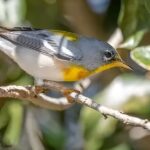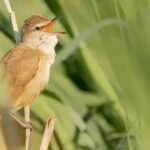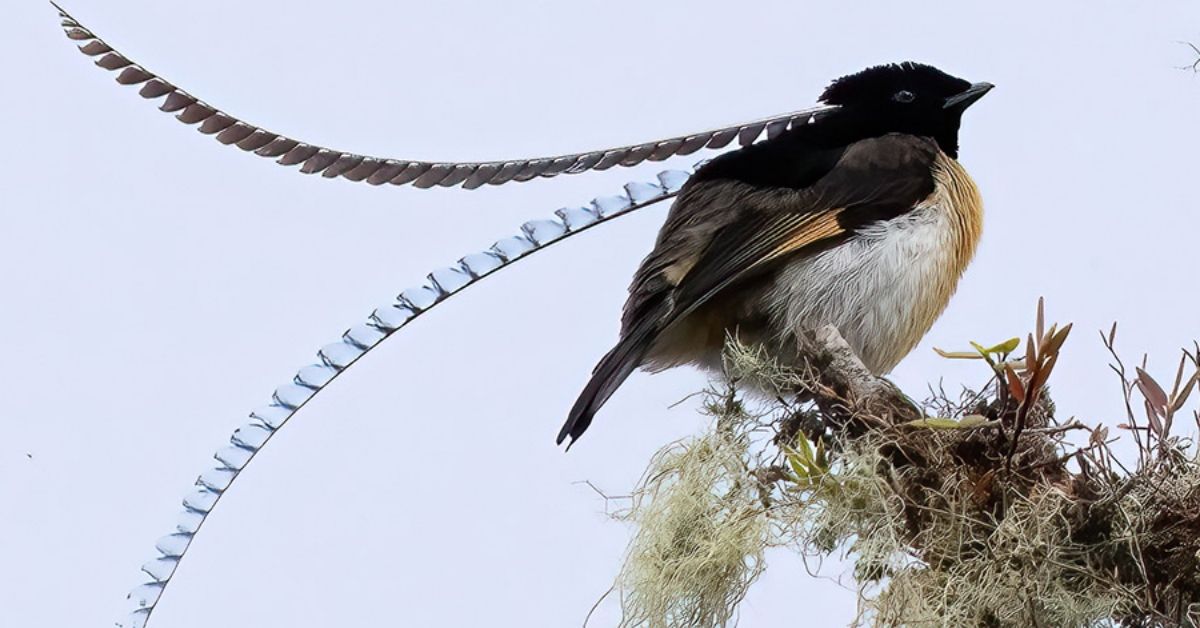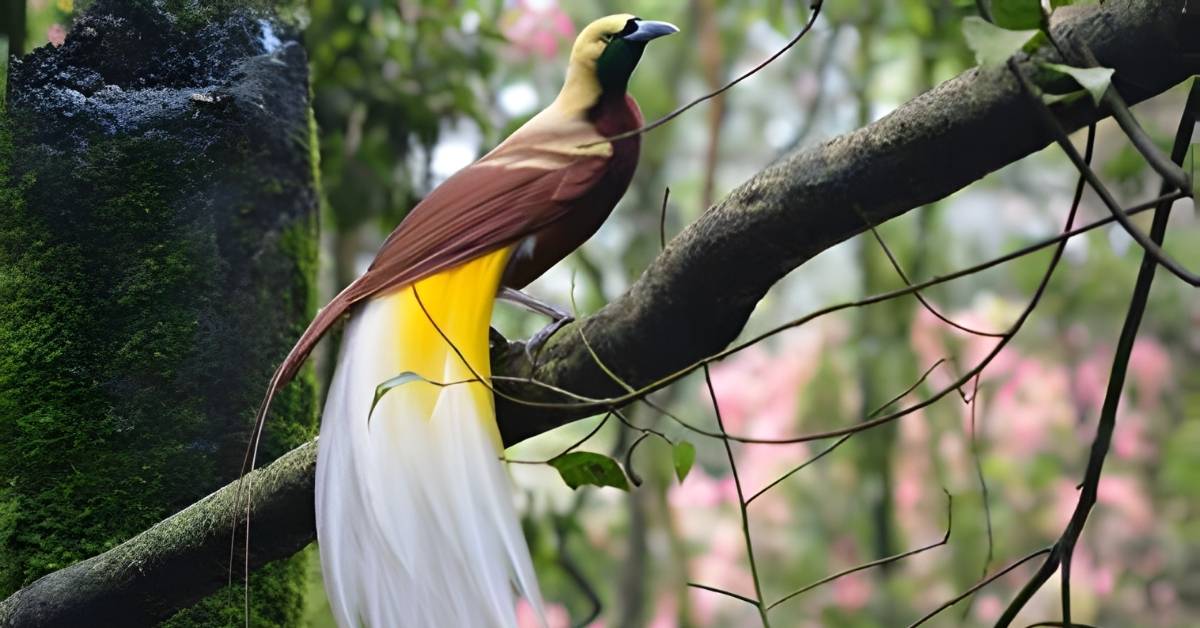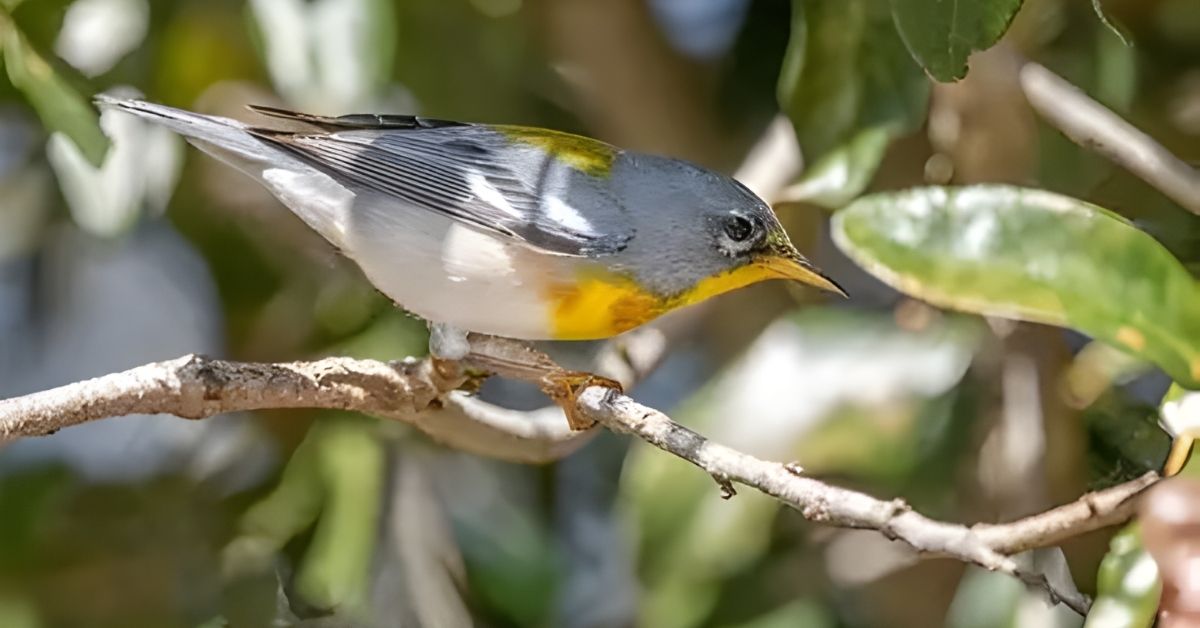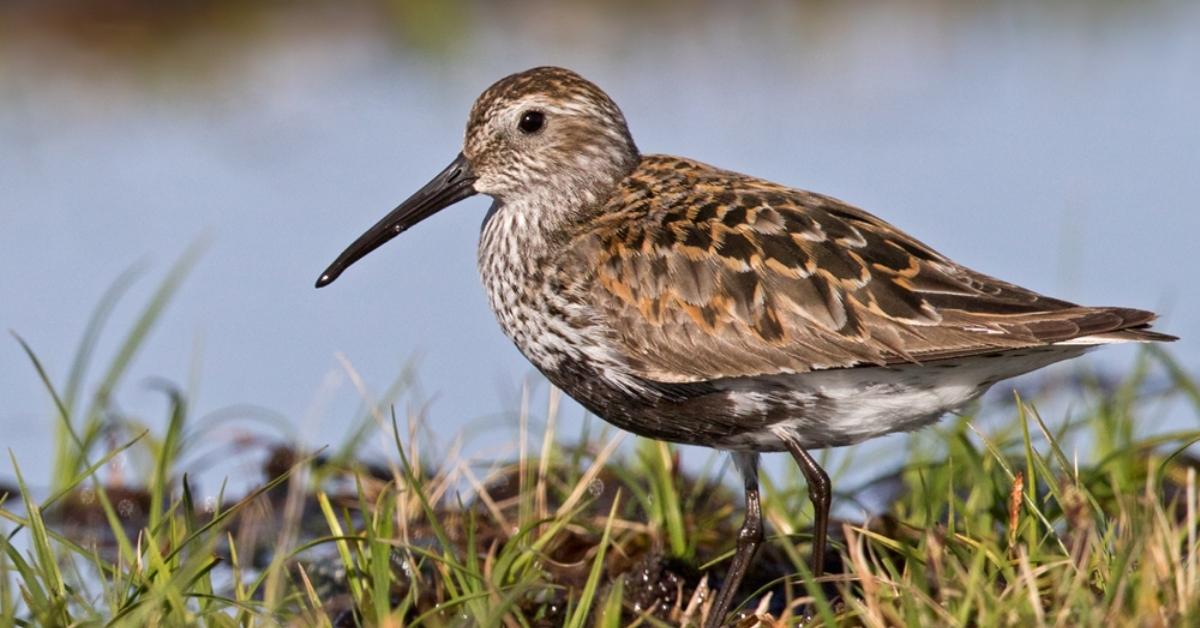The King of Saxony Bird of Paradise Fact is one of the most amazing stories in the bird world. This small species, known as Pteridophora alberti, lives high in the forests of New Guinea. People everywhere admire it for its strange and beautiful plumes. The feathers are so long and bright that early explorers thought they were fake. Learning about this makes you see how unusual nature can be.
It shows why this bird is so unique. Its head plumes grow longer than its body, reaching up to 50 cm. The male waves them during dances to impress the female. Scientists and bird lovers alike study every King of Saxony Bird of Paradise Fact to understand beauty, survival, and culture.
Introduction to the King of Saxony Bird of Paradise
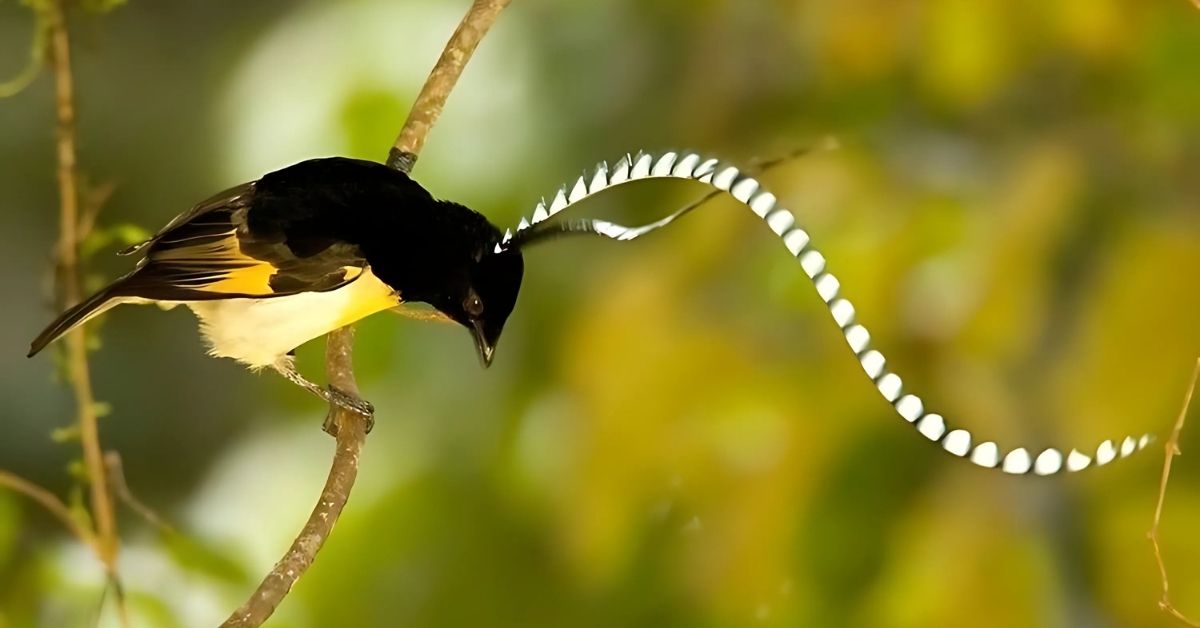
When people talk about the most extraordinary birds in the world, the King of Saxony Bird of Paradise always takes center stage. Known by its scientific name Pteridophora alberti, this rare species belongs to the unique genus Pteridophora. Its story begins with its name origin, chosen to honor Albert of Saxony, a German ruler admired for his love of nature.
This bird has fascinated scientists, travelers, and bird lovers for centuries because of its unmatched beauty and unusual features. From its striking body length to its long ornamental plumes, it looks like no other creature on Earth. Early explorers who first brought a specimen to Europe even faced disbelief, with many people insisting the feathers must be fake.
Unique Appearance and Ornamental Plumes
The King of Saxony Bird of Paradise may measure only about 22 cm in body length, but the male carries an astonishing set of feathers that extend far beyond its small frame. These are the long head plumes, sometimes called brow plumages, which can reach up to 50 cm in length. Each ribbon-like feather looks almost unreal, with vivid patterns that shine under sunlight. The male can erect and move these plumes at will, waving them like bright flags during its performances.
The female tells a different story. Unlike the flamboyant male, she has a soft greyish-brown body, marked with barred and striped underparts that help her blend into the forest surroundings. Her plain look is nature’s way of protecting her and her nest. This sharp contrast between the male and female highlights the power of sexual selection, where showy ornaments evolve not for survival but to win a partner’s attention.
Where the King of Saxony Bird of Paradise Lives
This bird is endemic to the misty highlands of New Guinea, where it thrives in dense montane forests. Its preferred home lies at lofty altitudes between 1,800 and 2,500 meters above sea level, although sightings have been recorded up to 2,850 meters. These cool mountain habitats are filled with tall trees, thick canopies, and a constant chorus of wildlife, offering both food and shelter.
Geographically, the bird’s range stretches from the Weyland Mountains in Western New Guinea to the Kratke Range and surrounding highlands in Papua New Guinea. The forests there are not only a refuge for the King of Saxony Bird of Paradise but also vital ecosystems supporting countless species. Losing these habitats through logging or farming threatens not only this bird but also the entire web of life connected to it.
Diet and Feeding Habits
The diet of the King of Saxony Bird of Paradise reflects its forest home. It feeds mainly on fruits and berries, which give it the energy needed for its daily activities. These foods also play a larger role in the forest, since the bird spreads seeds while moving from tree to tree. By doing so, it helps keep the ecosystem healthy and diverse. When fruit is scarce, it turns to smaller prey such as insects and arthropods, which provide essential protein.
Observers often find males perched high in trees, defending feeding areas while keeping an eye out for rivals. Their feeding style shows a balance between patience and agility, carefully picking ripe fruit while also catching insects on the wing. By adapting to seasonal changes in food supply, this bird demonstrates remarkable flexibility, ensuring it survives in challenging environments.
Also Read This: Wilson’s Bird of Paradise Facts
Courtship Displays and Mating Rituals
Few sights in nature compare to the courtship display of this bird. A male selects a branch to serve as his stage, often choosing high perches where his movements are easy to see. He begins with his song, producing strange and unique sounds that many listeners describe as radio static, hissing, or crackling. While he sings, he lifts and waves his long plumes, moving them with surprising control in rhythm with his dance.
The female watches carefully. She chooses her mate not based on chance but on how well he performs. Every flick of a plume, every note of the song, and every bold step in the dance must impress her. For the male, months of preparation may come down to a single performance, where the outcome decides if he will pass on his genes to the next generation.
The Role of the Long Head Plumes
The magnificent feather extensions of the male serve no purpose in survival; instead, they exist for attraction. Through evolution, these extravagant ornaments became tools to dazzle females during courtship. The ability to move and erect them at will makes the display even more captivating. While they might seem a burden, they signal the male’s strength, health, and vitality, showing he can thrive even while carrying such ornate structures.
Interestingly, the plumes of the King of Saxony Bird of Paradise sometimes appear outside their own displays. In the forests of New Guinea, Archbold’s Bowerbirds have been seen collecting shed plumes as decoration for their elaborate bowers. This curious borrowing underlines how remarkable these feathers are, admired not only by people but also by other birds.
Conservation Status and Threats
On paper, the King of Saxony Bird of Paradise sits under the Least Concern category on the IUCN Red List. That means the overall species population remains stable for now. However, threats still exist. Habitat destruction from logging and land clearing steadily shrinks the forest homes where these birds live. In some regions, hunting continues, as people seek the male’s long decorative feathers for traditional use or trade.
Even though the species is not endangered today, its future depends on awareness and action. Protecting montane forests in Papua New Guinea and neighboring regions ensures not just survival for this bird but for entire ecosystems. Conservationists argue that taking steps now prevents crises later, making it easier to keep this dazzling bird thriving in the wild.
Cultural Significance in Papua New Guinea
In Papua New Guinea, the King of Saxony Bird of Paradise carries immense cultural meaning. For centuries, communities have valued its feathers in rituals, dances, and ceremonies. The plumes symbolize beauty, strength, and connection to the natural world, turning them into treasured items for decoration and identity. Even today, traditional events often feature these feathers as a sign of respect for cultural heritage.
At the same time, the bird’s local name, Kisaba, reveals the intimate relationship between people and the species. While Western science names it Pteridophora alberti to honor Albert of Saxony, indigenous communities recognize it as part of their daily life and stories. Balancing cultural use with conservation remains a challenge, but many leaders now work to preserve both traditions and bird populations.
Differences Between Males and Females
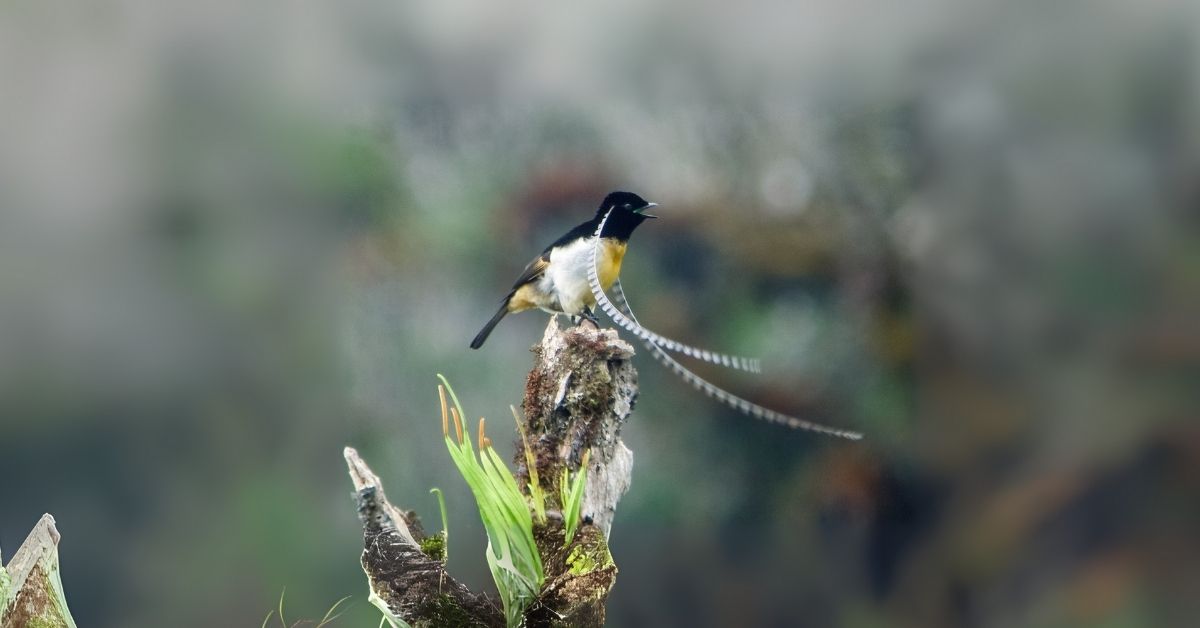
The male and female King of Saxony Bird of Paradise could almost be mistaken for two separate species. The male carries the famous head plumes, bright black and yellow markings, a shining aqua green mouth, and sharp brownish-grey legs. In contrast, the female displays muted greyish-brown shades with barred and striped underparts that make her nearly invisible in the forest shadows. This difference, called sexual dimorphism, helps each sex play its role more effectively.
Behavior also separates them. The male spends much of his time perfecting his display, guarding territorial perches, and rehearsing his dance. The female, meanwhile, focuses on selecting the best partner and then caring for the young. These distinct roles highlight nature’s balance, where each contributes differently to the species’ survival.
Fun and Lesser-Known Facts About the Species
One of the most entertaining facts about the King of Saxony Bird of Paradise involves its first arrival in Europe. Naturalists who examined the specimen could not believe the feather extensions were real, claiming they must be artificial or glued on. This disbelief only fueled the bird’s legendary status. Today, bird watchers still marvel at its almost surreal look.
Another fun detail lies in its unique sounds. While many birds sing melodious tunes, this one produces odd noises like radio static, hissing, and crackling, making it stand out even more. Add to that the curious way Archbold’s Bowerbirds collect dropped plumes for decoration, and you see how this bird inspires fascination across species. From myths and local traditions to modern documentaries, the King of Saxony Bird of Paradise remains one of nature’s most unforgettable wonders.
FAQs
What makes the King of Saxony bird unique?
The King of Saxony bird is unique for its two long ribbon-like head plumes that can grow twice the length of its body and are used in courtship displays.
What are some interesting facts about the bird-of-paradise?
Birds-of-paradise are famous for their bright colors, unusual feathers, and elaborate mating dances. Many species live only in New Guinea’s forests.
What is an interesting fact about the Superb bird of paradise?
The Superb bird of paradise transforms its black feathers into a vivid blue oval shape during courtship, creating one of nature’s most striking displays.
Conclusion
The King of Saxony Bird of Paradise Fact is more than just a story about a bird. It is about beauty, nature, and survival. This rare species lives in the high forests of New Guinea. Its long plumes are unlike any other feathers in the world. People admire every King of Saxony Bird of Paradise Fact because it shows how special this bird truly is. These facts also remind us how important it is to protect forests.
Each King of Saxony Bird of Paradise Fact tells us something new. The bird teaches us about courtship, culture, and conservation. Its feathers inspire art and tradition. Its sounds surprise listeners. Remembering every King of Saxony Bird of Paradise Fact helps us value wildlife and keep it safe for the future.

Spiritual Vora shares deep insights on dreams, angel numbers, spiritual meanings, and inner healing. Our mission is to guide souls toward clarity, growth, and divine connection through uplifting and enlightening content.



